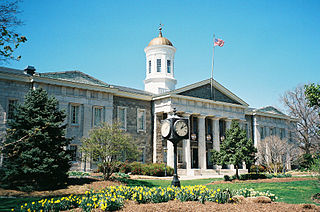
Baltimore County is the third-most populous county in the U.S. state of Maryland and is part of the Baltimore metropolitan area. Baltimore County is part of the Northeast megalopolis, which stretches from Northern Virginia northward to Boston. Baltimore County hosts a diversified economy, with particular emphasis on education, government, and health care. As of the 2020 census, the population was 854,535.
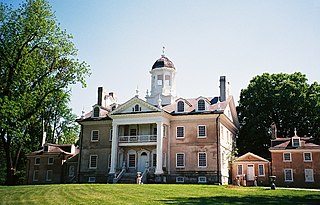
Hampton is an unincorporated community and census-designated place (CDP) in Baltimore County, Maryland, United States. The population was 5,052 at the 2010 census. Hampton is often considered a subdivision of the nearby community of Towson and is located just north of Baltimore, about twenty minutes from downtown. Hampton contains residences situated on lots up to several acres in a park-like setting. The community is anchored by its principal landmark, the Hampton National Historic Site. The Towson United Methodist Church is located in Hampton, flanked on the south by I-695 and Goucher College.

Towson is an unincorporated community and a census-designated place in Baltimore County, Maryland, United States. The population was 55,197 as of the 2010 census. It is the county seat of Baltimore County and the second-most populous unincorporated county seat in the United States.

George Howard was the 22nd Governor of the State of Maryland in the United States from 1831 to 1833. Howard was well known as a fervent anti-Jacksonian during his term in office. He was the only son of a governor to have been elected governor.

Arlington House is the historic family residence of Robert E. Lee, commanding general of the Confederate Army during the American Civil War in Arlington County, Virginia. The historic home along with a memorial to Lee are situated in the middle of Arlington National Cemetery in Arlington County, where they overlook the Potomac River and the National Mall in Washington, D.C.
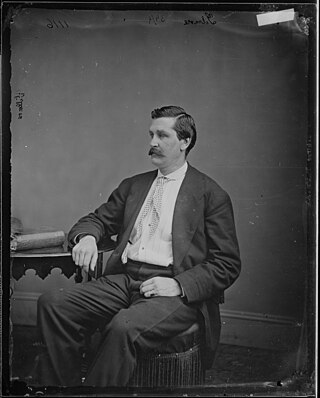
Harry Ward Gilmor served as the Baltimore City Police Commissioner, head of the Baltimore City Police Department in the 1870s, and a Confederate cavalry officer during the American Civil War. Gilmor's daring raids, including Gilmor's Raid through northern and central Maryland in July 1864 during the third major Confederate invasion of the North gained his partisans fame as "Gilmor's Raiders".
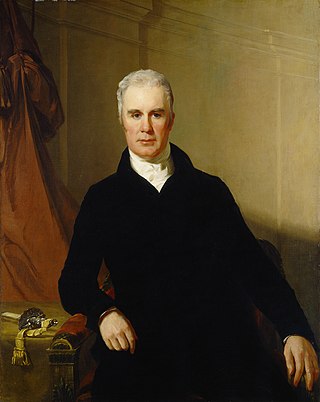
Charles Carnan Ridgely was born Charles Ridgely Carnan. He is also known as Charles Ridgely of Hampton. He served as the 15th Governor of the state of Maryland in the United States from 1815 to 1818. He also served in the Maryland House of Delegates from 1790 to 1795, and in the Maryland State Senate from 1796 to 1800. Charles was born in Baltimore. He was the son of John Carnan and Achsah Ridgely, sister of Captain Charles Ridgely. The Maryland Gazette described him as an aristocrat.
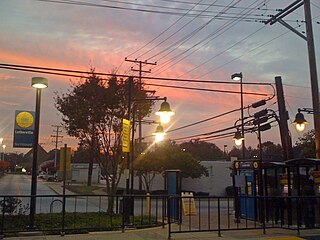
Lutherville is a census-designated place (CDP) in Baltimore County, Maryland, United States. As of the 2010 census it had a population of 6,504. Prior to 2010 the area was part of the Lutherville-Timonium CDP. Within its borders lies the Lutherville Historic District.
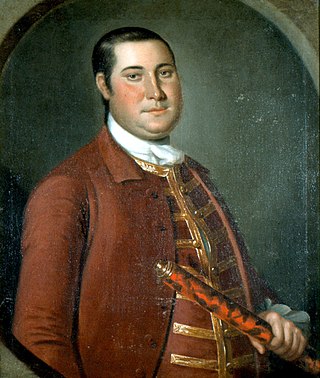
Captain Charles Ridgely III (1733–1790) was a colonial Maryland planter and ironmonger.

Col. Charles Ridgely II, "Charles The Merchant" (1702–1772), of "Ridgely's Whim", was a Justice, planter, merchant, ironmaster, and member of the General Assembly of Maryland's lower chamber, House of Delegates and one of Baltimore County's commissioners. Charles II was the son of Charles Ridgely I,, , and Deborah Dorsey, daughter of Hon. John Dorsey.

The Belair Mansion, located in the historic Collington area and in Bowie, Maryland, United States, built c. 1745, is the Georgian style plantation house of Provincial Governor of Maryland, Samuel Ogle. Later home to another Maryland governor, the mansion is listed on the National Register of Historic Places.

Melrose is a 15,000 square feet (1,400 m2) mansion, located in Natchez, Mississippi, that is said to reflect "perfection" in its Greek Revival design. The 80-acre (320,000 m2) estate is now part of Natchez National Historical Park and is open to the public by guided tours. The house is furnished for the period just before the Civil War. Melrose was declared a National Historic Landmark in 1974.

Towson United Methodist Church is a large United Methodist Church in the historic Hampton subdivision of Towson, a suburb in Baltimore County, Maryland. Its past, rooted in 19th-century America and subsequent growth in the two centuries since then, has closely paralleled the nation's political and sociological trends. It was a congregation split asunder in 1861 on the eve of the American Civil War in a border state of divided loyalties, which eventually reunited and built a church in the post–World War II era of the 1950s, a time of reconciliation and rapid growth by mainline Protestant denominations, especially in the more affluent suburbs.

Mount Clare, also known as Mount Clare Mansion and generally known today as the Mount Clare Museum House, is the oldest Colonial-era structure in the City of Baltimore, Maryland, U.S.A. The Georgian style of architecture plantation house exhibits a somewhat altered five-part plan. It was built on a Carroll family plantation beginning in 1763 by barrister Charles Carroll the Barrister, (1723–1783), a descendant of the last Gaelic Lords of Éile in Ireland and a distant relative of the much better-known Charles Carroll of Carrollton, (1737–1832), longest living signer of the Declaration of Independence and the richest man in America in his later years, also the layer of the First Stone of the new Baltimore and Ohio Railroad, just a short distance away in 1828.
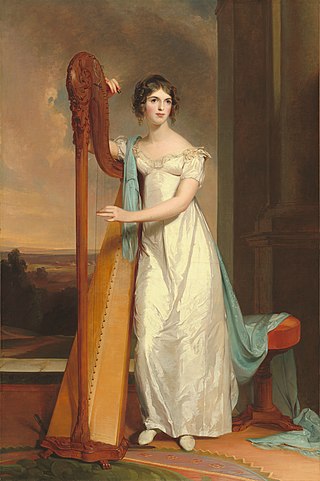
Eliza Eichelberger Ridgely was an American heiress, traveler, arbiter of fashion, and mistress of Hampton, the Ridgely plantation north of Towson, Maryland. She is the Lady with a Harp of Thomas Sully's portrait, now in the National Gallery of Art, Washington, D.C.

Waverly Mansion is a historic home located at Marriottsville in Howard County, Maryland, USA. It was built circa 1756, and is a 2+1⁄2-story Federal style stone house, covered with stucco, with a hyphen and addition that date to circa 1811. Also on the property are a small 1+1⁄2-story stone overseer's cottage and a 2-story frame-and-stone barn, and the ruins of a log slave quarter.
Aigburth Vale house at 212 Aigburth Road in Towson was designed in 1868, by architects Niernsee & Neilson, as a country home for wealthy actor John E. Owens.
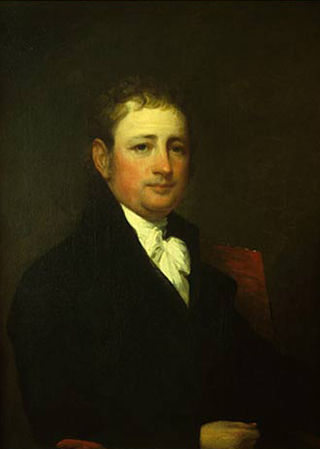
George Calvert, was a plantation owner and slaveholder in late eighteenth- and early nineteenth-century Maryland. His plantation house, Riversdale plantation, also known as the Calvert Mansion, is a five-part, large-scale late Georgian mansion with superior Federal interior, built between 1801 and 1807, and was designated a National Historic Landmark in 1997. Calvert's wife, the Belgian-born heiress Rosalie Stier Calvert, was an indefatigable correspondent whose letters, titled Mistress of Riversdale, The Plantation Letters of Rosalie Stier Calvert, was published by the Johns Hopkins University Press in 1991. The letters range in date from 1795 to 1821, and illuminate the life of the Calverts' plantation household during the events leading up to and during the War of 1812.
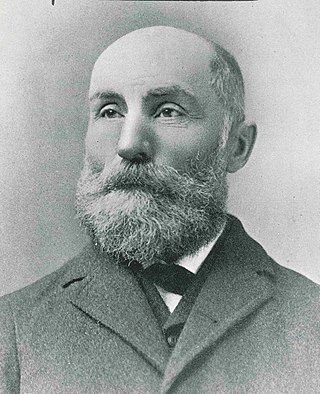
Grafton Marsh Bosley was a physician, philanthropist, planner, and politician. He was the son of Amon Bosley and Rebecca Marsh Bosley. He attended Dickinson College and University of Maryland Medical School. He married Margaretta M. Nicholson on May 5, 1857, and they had a single son, Arthur L. Bosley, before his wife's death in 1885.
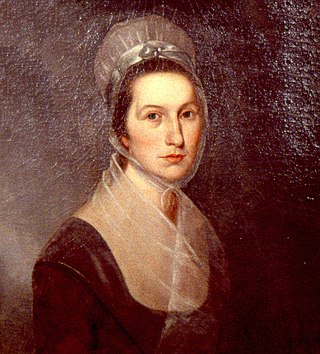
Priscilla Dorsey Ridgely was First Lady of Maryland.
































